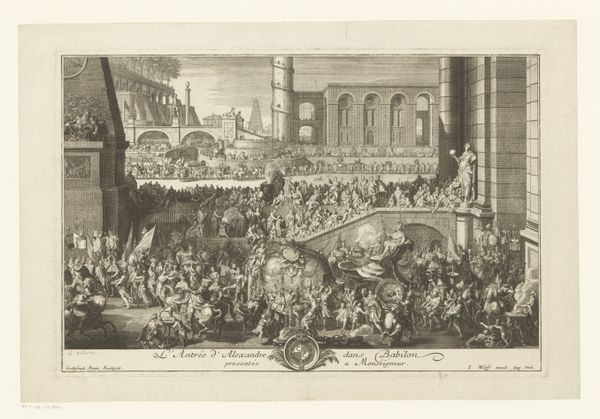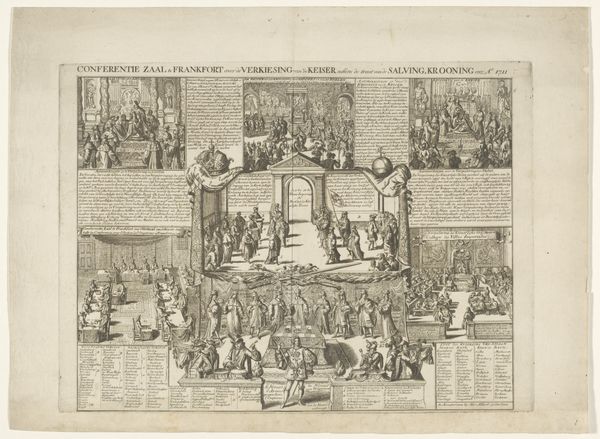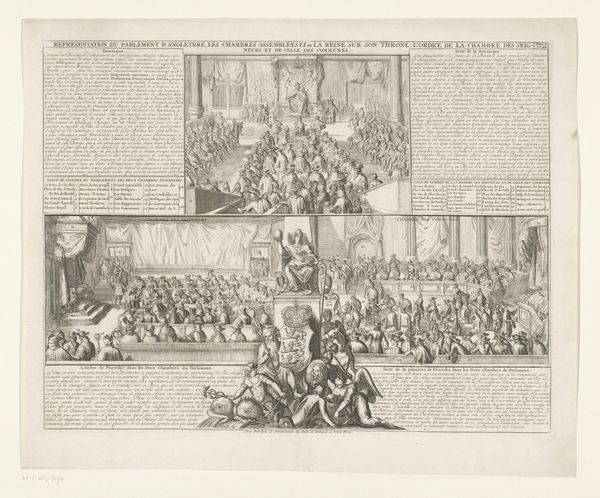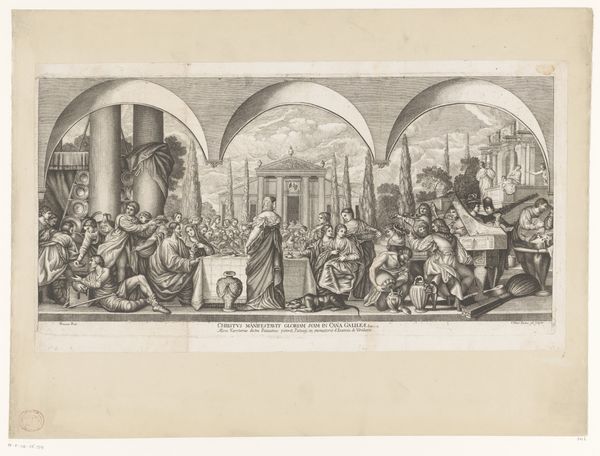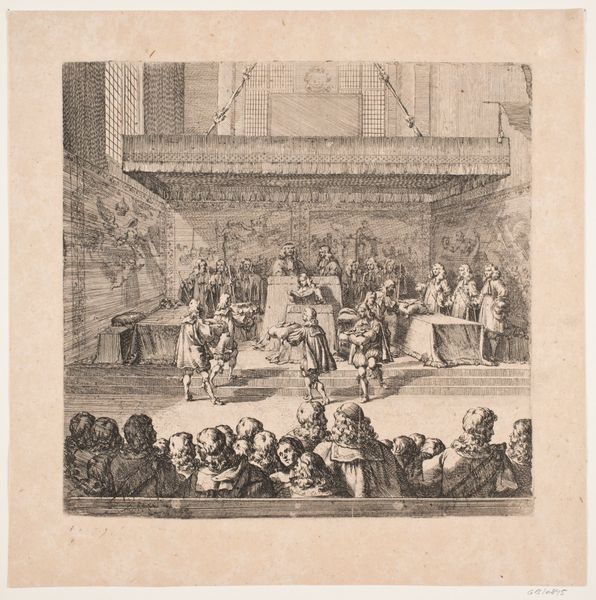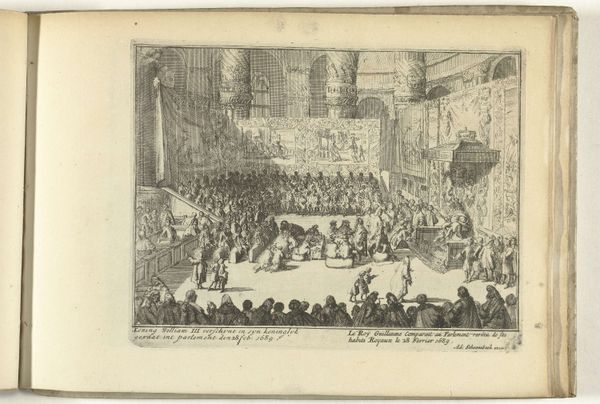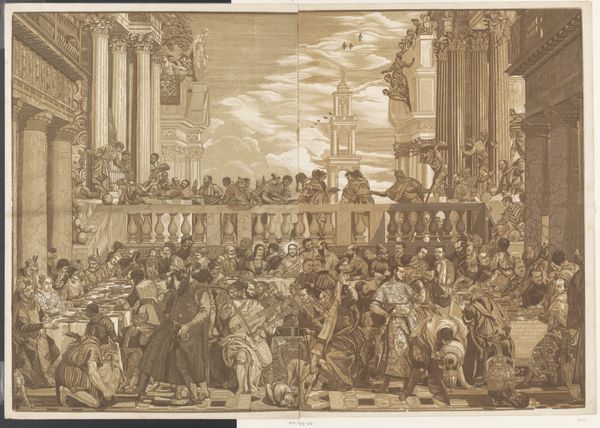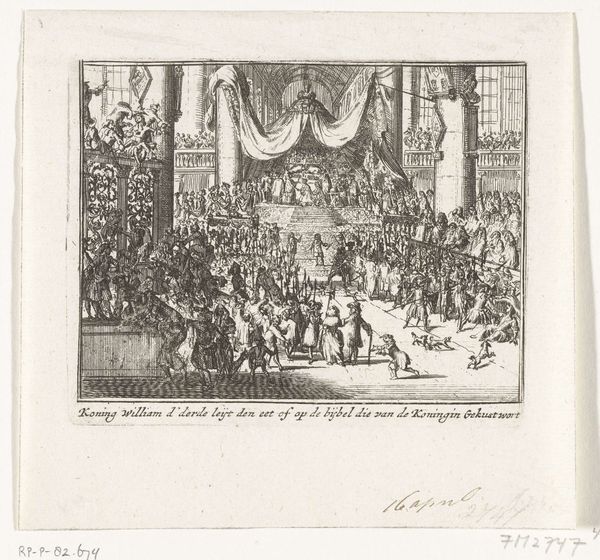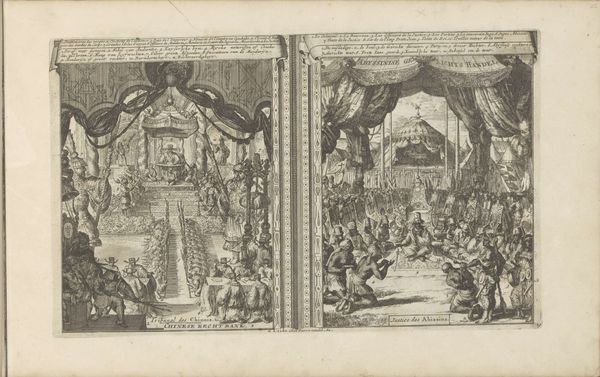
print, engraving
#
baroque
# print
#
geometric
#
line
#
cityscape
#
history-painting
#
engraving
Dimensions: height 256 mm, width 298 mm
Copyright: Rijks Museum: Open Domain
Editor: This print, "Koning Willem III bij een zitting van het Lagerhuis, 1689," made in 1691, captures a moment in history. All of those figures... I’m struck by the formality of the scene. What jumps out at you, especially considering the historical context? Curator: Well, the depiction of William III addressing the House of Commons is not just a scene but a statement about power, particularly in a post-revolutionary England. This image was created to portray an ideal of power sharing, but it's worth asking: for whom was this image intended to convey this message of shared governance, and whose voices were amplified or silenced within this visual representation? Editor: That's a really interesting question. So, this image might be more about presenting a certain *idea* of governance than a purely objective record? Curator: Precisely! Consider how the architecture emphasizes order and hierarchy. This meticulously rendered space tells us as much about the values as the people within it. We also need to consider who had access to this image. Was it for popular consumption, or a tool to legitimize William’s reign amongst the elites? Editor: I didn’t think about it in terms of legitimacy. Curator: Thinking about art as a tool helps us analyze how it participates in the social and political dialogues of its time, don’t you agree? Editor: I do. Now I’m wondering how accurate these representations of power even are. Thanks for making me consider all those power dynamics. Curator: Indeed. The act of looking, questioning, and understanding art in its multifaceted contexts opens new avenues of critical understanding.
Comments
No comments
Be the first to comment and join the conversation on the ultimate creative platform.

